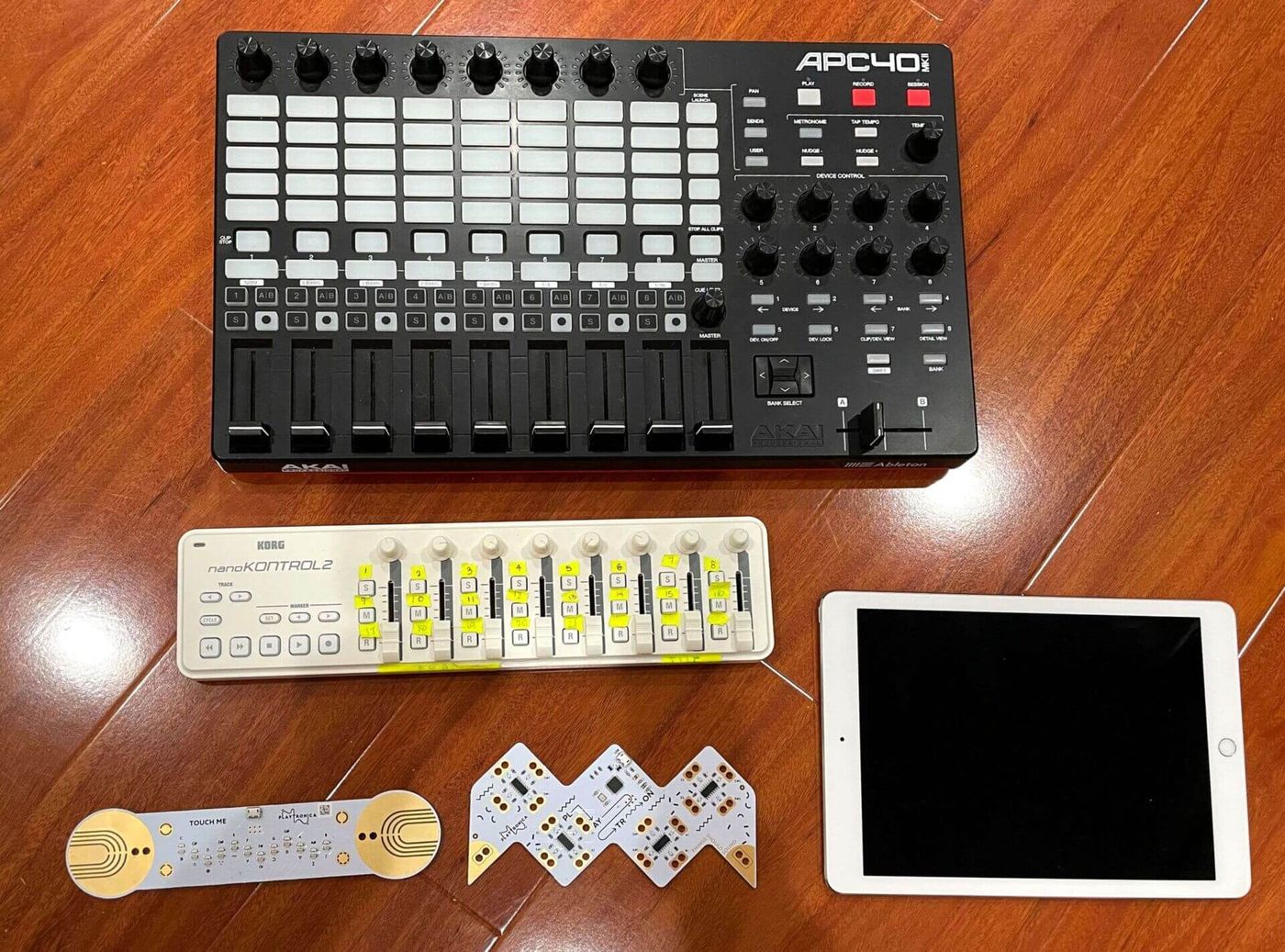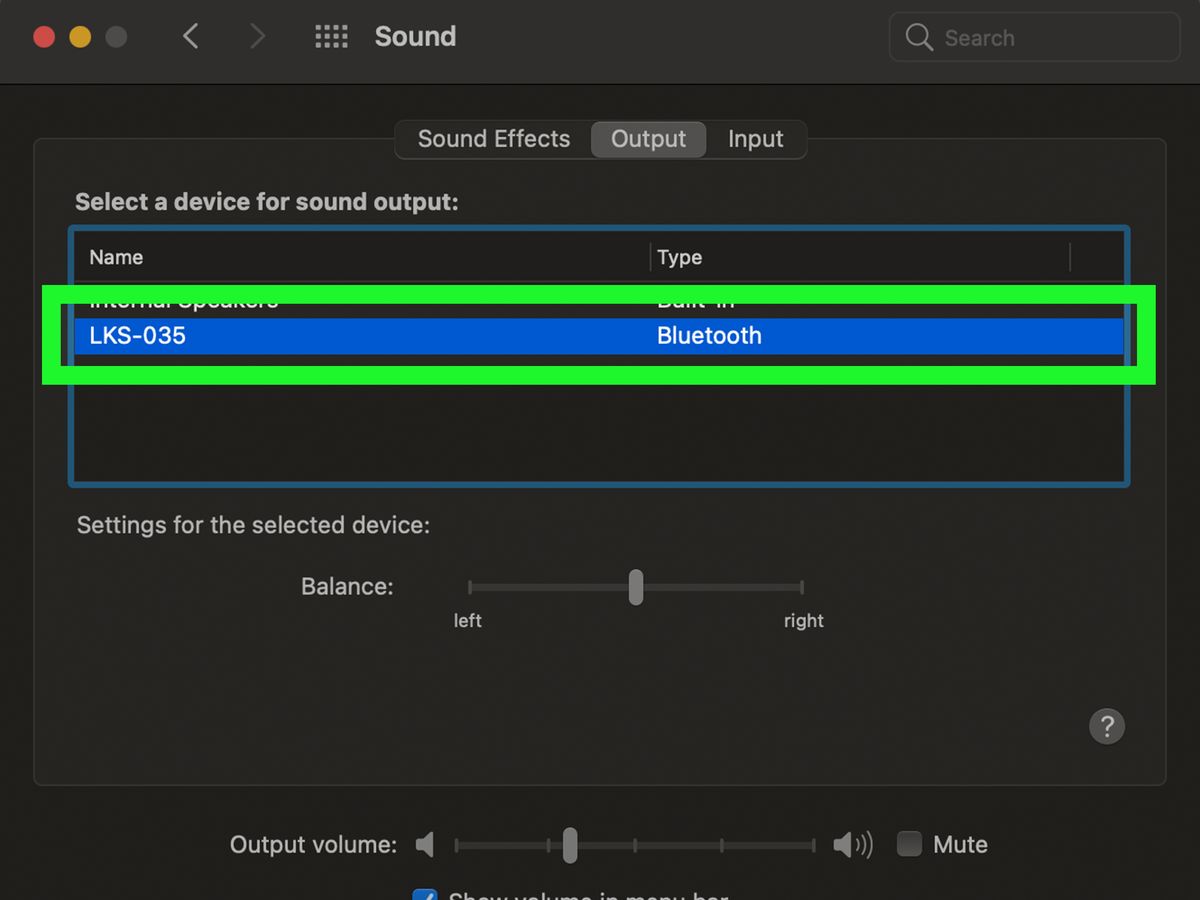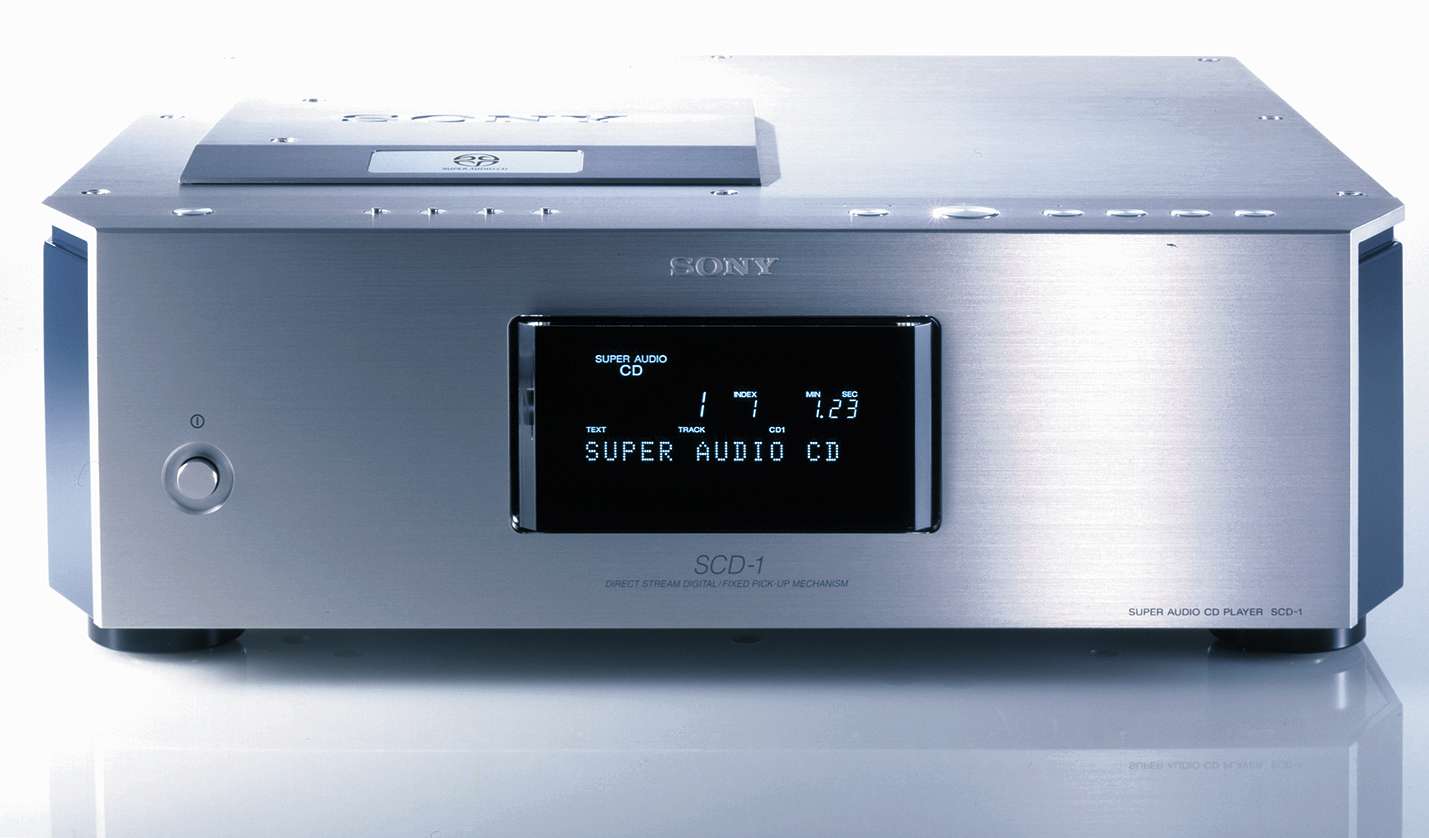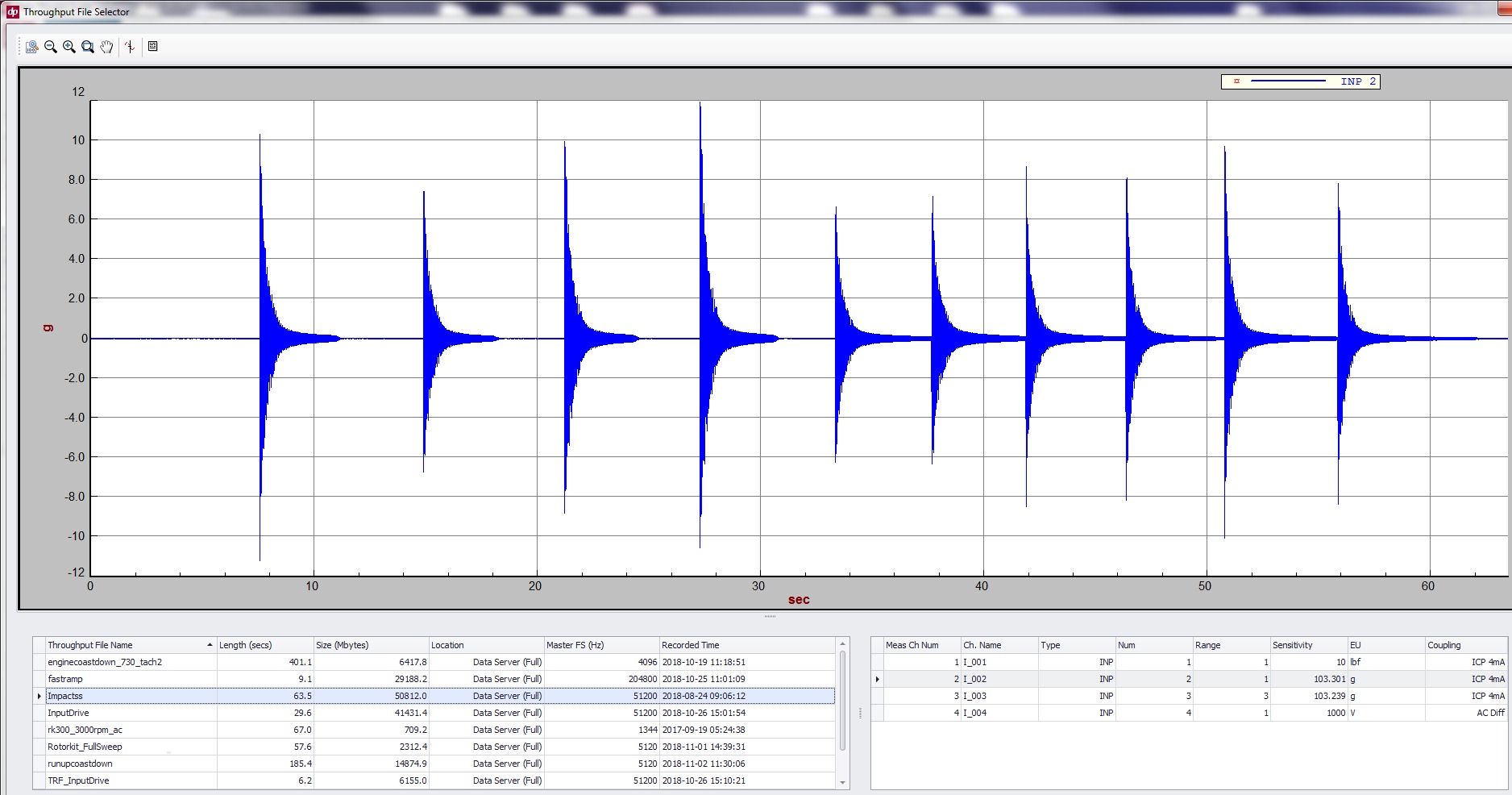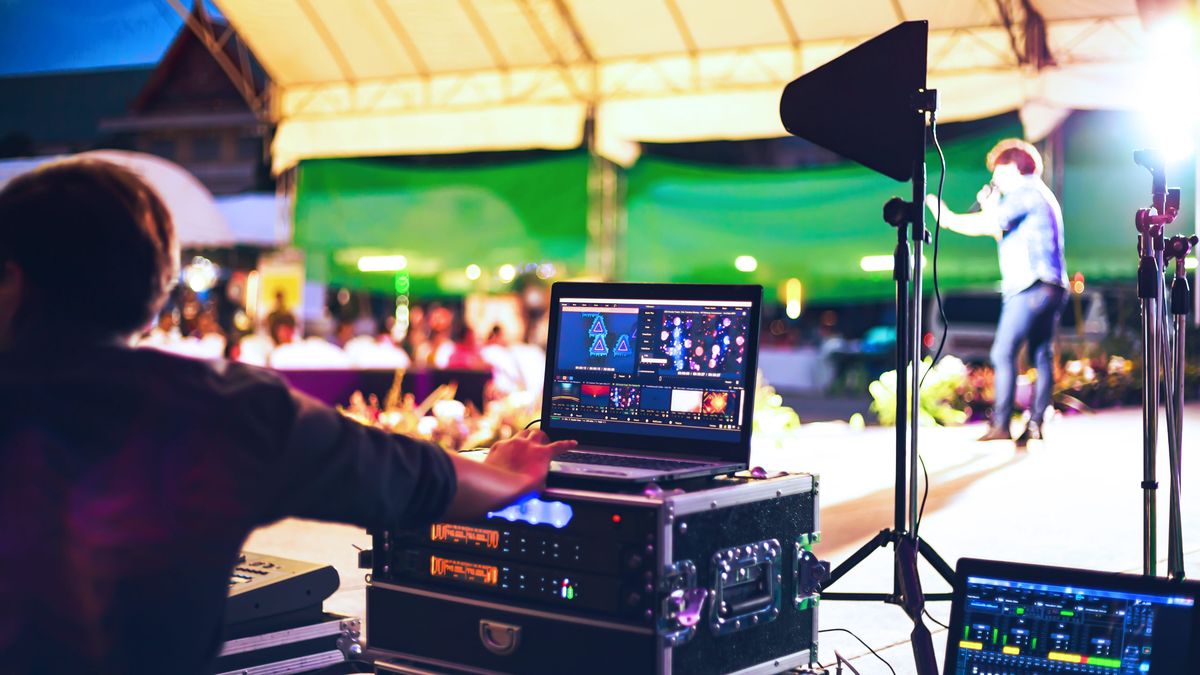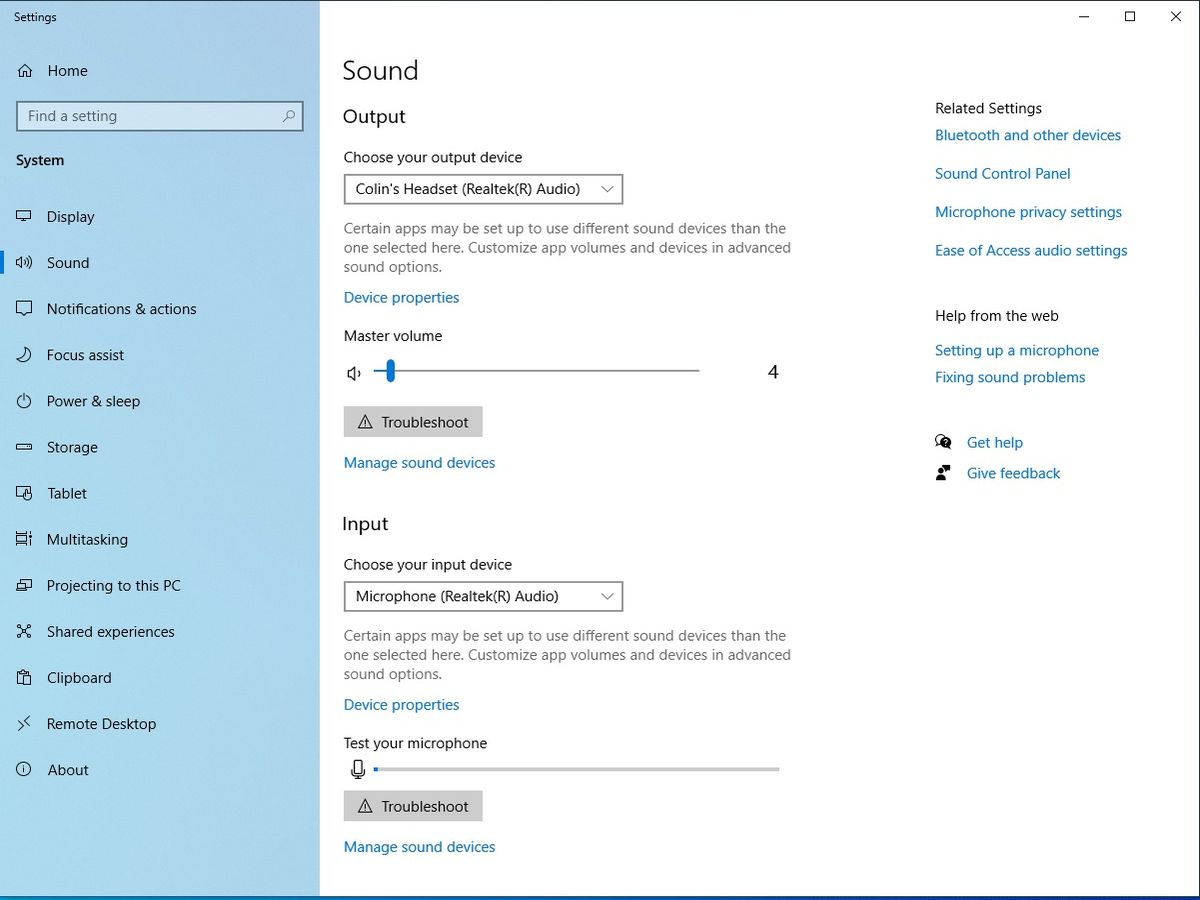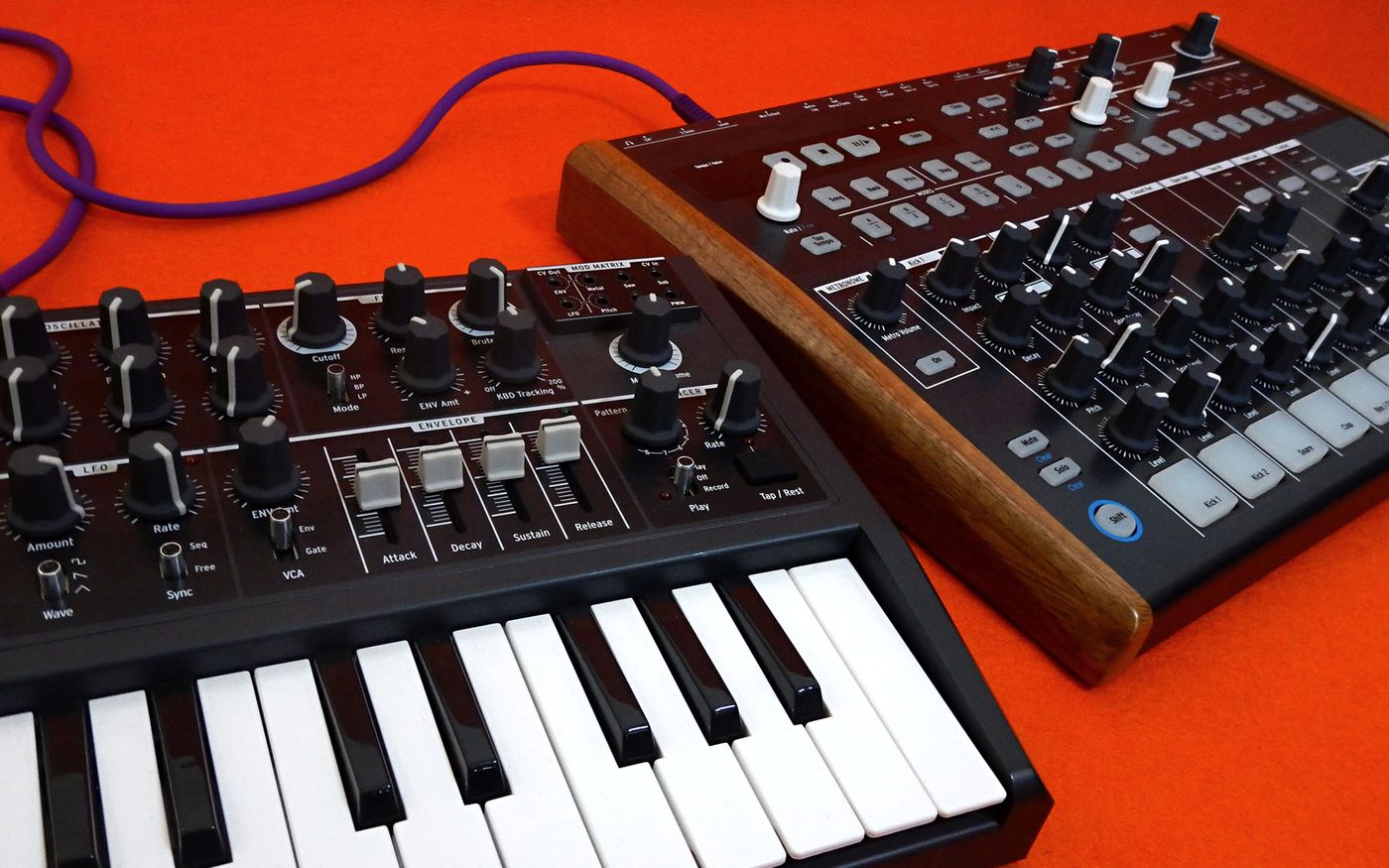Home>Events & Info>Playback>What Is A Playback Device
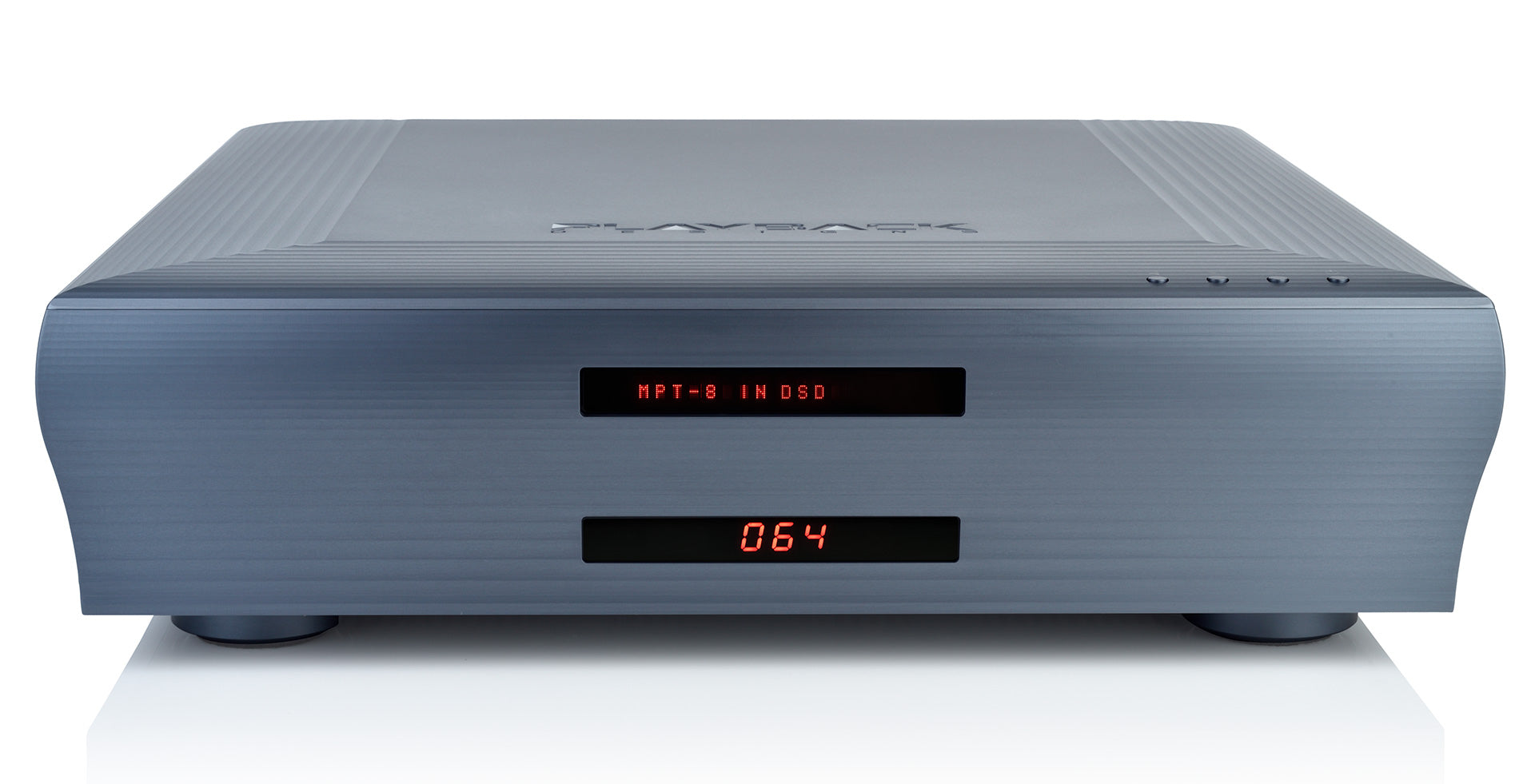

Playback
What Is A Playback Device
Published: November 7, 2023
Learn about playback devices and their importance in the digital age. Discover how playback technology allows you to enjoy your favorite media content seamlessly and effortlessly.
(Many of the links in this article redirect to a specific reviewed product. Your purchase of these products through affiliate links helps to generate commission for AudioLover.com, at no extra cost. Learn more)
Table of Contents
- Introduction
- Definition of a Playback Device
- Types of Playback Devices
- Importance of Playback Devices
- How Playback Devices Work
- Features and Functions of Playback Devices
- Common Brands and Models of Playback Devices
- Factors to Consider When Choosing a Playback Device
- Future Trends in Playback Devices
- Conclusion
Introduction
A playback device is an essential tool in the world of technology and entertainment. It plays a pivotal role in our daily lives, allowing us to enjoy various types of media, such as music, movies, and TV shows, in the comfort of our homes or on the go. Whether it’s a music player, DVD player, or streaming device, playback devices have become an integral part of our entertainment experience.
With the rapid advancement of technology, playback devices have evolved significantly over the years. Gone are the days of bulky cassette players and VCRs; today, we have sleek and compact devices that offer seamless connectivity and high-quality audio and video playback. These devices have revolutionized how we consume media, bringing entertainment to our fingertips.
The primary function of a playback device is to retrieve and play back digital or analog media files. It decodes the data stored on a physical medium or in a digital format and converts it into audio or video signals that can be easily interpreted by our senses. Whether it’s listening to our favorite songs, watching a blockbuster movie, or streaming the latest episodes of our beloved TV series, playback devices provide us with endless hours of entertainment and enjoyment.
Definition of a Playback Device
A playback device, sometimes referred to as a media player, is a device that allows users to retrieve and play back various types of media files. These devices are designed to decode and present audio or video content in a format that can be easily consumed by individuals. They can range from standalone devices like mp3 players, DVD players, and Blu-ray players to integrated software applications on computers and smartphones.
A playback device acts as a bridge between the media files and the user, facilitating the seamless playback of content. It consists of hardware components, such as a processor, memory, and audio/video output interfaces, as well as software or firmware that controls the device’s operation and interacts with the user.
Playback devices support a wide range of media formats, including audio formats like MP3, WAV, and FLAC, as well as video formats like MP4, AVI, and MKV. They can access media files from various sources, including physical media like CDs, DVDs, and Blu-ray discs, as well as digital storage devices like USB flash drives and external hard drives. In addition, many modern playback devices support streaming services, allowing users to access and play content directly from online platforms.
One of the distinguishing features of playback devices is their ability to provide a user-friendly interface that allows users to navigate through their media library, select specific files to play, and control playback options like play, pause, rewind, and fast forward. They often come with remote controls, touchscreens, or tactile buttons to facilitate these interactions.
Overall, the purpose of a playback device is to enhance the user’s media consumption experience by providing a convenient and efficient way to access and play audio and video content. Whether at home, in the car, or on the go, these devices have become an integral part of our daily lives, keeping us entertained and connected to our favorite forms of media.
Types of Playback Devices
Playback devices come in various forms, each designed to cater to specific media playback needs. Let’s explore some of the most common types of playback devices:
- Music Players: These devices are specifically designed for playing audio files. They range from compact mp3 players that can fit in the palm of your hand to larger portable music players that offer more storage capacity and advanced features. Music players allow you to carry your favorite songs and playlists with you wherever you go.
- DVD and Blu-ray Players: DVD and Blu-ray players are popular devices for playing movies and TV shows. They typically come with a disc tray that supports DVDs and Blu-ray discs, allowing you to enjoy high-definition video and immersive audio. These devices are commonly found in home theater setups.
- Streaming Devices: With the rise of online streaming platforms, streaming devices have become increasingly popular. These devices connect to your TV and enable you to access a wide range of streaming services like Netflix, Hulu, and Amazon Prime Video. They offer a convenient way to stream movies, TV shows, and other digital content directly to your television.
- Smartphones and Tablets: Smartphones and tablets have become versatile playback devices, capable of handling various types of media. With their high-resolution screens and powerful processors, these devices allow you to listen to music, watch videos, and even play games on the go. They offer the convenience of having multiple functionalities in a single device.
- Gaming Consoles: While primarily known for gaming, gaming consoles like the PlayStation and Xbox also double as multimedia devices. They support playback of DVDs and Blu-ray discs, as well as streaming services. Additionally, you can listen to music and watch videos on these consoles, making them a great entertainment hub for gamers.
These are just a few examples of the types of playback devices available in the market. Each type offers unique features and functionalities, catering to different preferences and needs. Whether you prefer a dedicated music player, a DVD player for your movie collection, or a versatile smartphone, there is a playback device to suit every taste and requirement.
Importance of Playback Devices
Playback devices play a significant role in our lives, offering numerous benefits and enhancing our entertainment experience. Let’s delve into the importance of these devices:
1. Access to a Wide Range of Media: Playback devices allow us to access and enjoy a vast array of media content. Whether it’s music, movies, TV shows, or podcasts, these devices enable us to explore and consume a diverse range of entertainment options. They provide us with the means to discover new artists, immerse ourselves in captivating stories, and stay up to date with the latest trends in the entertainment industry.
2. Convenience and Portability: One of the key advantages of playback devices is their convenience and portability. We can carry our favorite music, movies, and TV shows with us wherever we go, thanks to lightweight and compact devices like smartphones and portable music players. This convenience allows us to enjoy our preferred media on the commute, during workouts, or while traveling, making our downtime more enjoyable and productive.
3. Personalized Entertainment Experience: Playback devices offer the flexibility to curate our own entertainment experience. We have control over what we listen to, watch, and engage with, whether it’s creating personalized playlists, skipping tracks, or selecting specific episodes of a TV series. This level of personalization ensures that we have the power to tailor our entertainment to our preferences, creating a more immersive and enjoyable experience.
4. Family Entertainment and Bonding: Playback devices also foster family entertainment and bonding. They provide an avenue for gathering the whole family to enjoy movies, TV shows, or music together. From movie nights to dance parties, playback devices facilitate shared experiences, creating opportunities for laughter, discussions, and meaningful connections with loved ones.
5. Educational and Informative Content: Playback devices not only offer entertainment but also serve as a valuable tool for education and information. With access to documentaries, podcasts, audiobooks, and online courses, these devices enable us to expand our knowledge, explore new subjects, and stay informed on various topics. They encourage continuous learning and personal growth.
6. Escape and Stress Relief: Playback devices provide an escape from the stresses and demands of everyday life. Whether it’s getting lost in a captivating movie or immersing ourselves in our favorite music, these devices offer a form of relaxation and stress relief. They transport us to different worlds, evoke emotions, and allow us to recharge and unwind.
Overall, playback devices enrich our lives by offering entertainment, convenience, and personalization. They bring joy, knowledge, and relaxation into our daily routines, making them an integral part of our modern lifestyle.
How Playback Devices Work
Playback devices employ a combination of hardware and software components to retrieve and play back media files. Understanding how these devices work provides insight into the technological process behind the seamless playback of audio and video content. Let’s explore the general workings of playback devices:
1. Data Retrieval: Playback devices retrieve media files from different sources, depending on the device type. Physical playback devices like DVD and Blu-ray players read data from discs using a laser beam that scans the disc’s surface. Digital playback devices such as mp3 players and smartphones access files stored on internal memory or external storage devices like SD cards or USB drives. Streaming devices connect to the internet to retrieve media files from online platforms.
2. Decoding: Once the media files are retrieved, the playback device decodes the encoded data into a recognizable format. This process involves extracting audio and video signals from the file’s encoded data. Decoding algorithms within the playback device interpret the data and convert it into a digital format that can be transformed into audio or video output.
3. Audio and Video Processing: After decoding, the playback device carries out audio and video processing to enhance the quality of the playback. This includes tasks like adjusting audio levels, applying audio effects, and optimizing video resolution and color reproduction. High-end playback devices often incorporate advanced audio and video processing technologies to deliver a superior viewing or listening experience.
4. Output and Display: Once the media file is decoded and processed, the playback device sends the audio and video signals to an output interface for display or playback. For example, DVD and Blu-ray players typically use HDMI or analog outputs to connect to a television, while smartphones and tablets use their built-in speakers and screens for playback. Some devices offer options for connecting to external speakers or displays for a more immersive experience.
5. User Controls: Playback devices provide various user controls to interact with the media playback. These controls may include buttons, touchscreens, remote controls, or software interfaces. Users can play, pause, skip tracks, adjust volume, and customize playback settings to suit their preferences. User controls also allow for navigating through menus, selecting specific media files, and accessing additional features and functionalities.
6. Synchronization and Playback: Playback devices ensure that audio and video synchronize properly during playback. This synchronization ensures that the audio and video components of a media file are played in harmony, providing a seamless viewing or listening experience. Digital playback devices use software algorithms to maintain synchronization, while physical playback devices rely on precise timing mechanisms.
Through the combination of these processes, playback devices enable us to enjoy our favorite media content in a format that engages our senses. From hearing our favorite songs to watching movies with stunning visuals, playback devices play a crucial role in delivering an immersive and enjoyable entertainment experience.
Features and Functions of Playback Devices
Playback devices come with a range of features and functions that enhance the user experience and provide added convenience. These features vary depending on the type of playback device, but there are some common functionalities shared across different devices. Let’s explore the key features and functions of playback devices:
1. Playback Formats: Playback devices support various audio and video formats, ensuring compatibility with different types of media files. This allows users to play their favorite music in formats like MP3, AAC, or FLAC, and enjoy movies and TV shows in formats such as MPEG, AVI, or MKV. The ability to handle multiple formats ensures versatility and broad compatibility.
2. Storage Capacity: Many playback devices offer built-in or expandable storage, allowing users to store a large collection of media files directly on the device. This is particularly useful for music players and smartphones, enabling users to carry their favorite songs, albums, or movies wherever they go without relying on an internet connection. High storage capacity ensures ample space for media files.
3. Wireless Connectivity: Modern playback devices often come with wireless connectivity options such as Bluetooth, Wi-Fi, or NFC. This allows for seamless wireless pairing with headphones, speakers, or other devices, eliminating the need for cumbersome cables. Streaming devices leverage Wi-Fi or Ethernet connections to access online platforms and stream media content without the need for physical media or downloads.
4. Streaming Capabilities: Many playback devices, such as streaming devices and smart TVs, offer built-in streaming capabilities. These devices connect to popular streaming services like Netflix, Hulu, or Spotify, enabling users to access a vast library of content directly from the device. Streaming capabilities provide convenience and access to a wide range of entertainment options.
5. User Interface: Playback devices come with user-friendly interfaces that allow for easy navigation and control. This includes features like menu systems, intuitive touchscreen displays, or remote controls. A well-designed user interface ensures that users can effortlessly browse through media libraries, select specific files to play, and access additional features and settings.
6. Playback Controls: Playback devices incorporate standard playback controls such as play, pause, skip, and volume adjustment. These controls ensure that users have full control over their media playback experience. Additionally, advanced features like repeat, shuffle, and playlist creation allow for personalization and customization of the playback order.
7. External Connectivity: Many playback devices offer connectivity options for external devices. This includes HDMI or USB ports to connect to TVs or external speakers, headphone jacks for personal listening, or even SD card slots for expanded storage. External connectivity expands the versatility of playback devices and allows for seamless integration with other technology.
8. Customizable Settings: Playback devices often include customizable settings for audio and video playback. Users can adjust equalizer settings, select different audio presets, or modify video settings like brightness, contrast, and color saturation. These customizable settings allow users to tailor their media playback to their personal preferences and enhance their overall viewing or listening experience.
9. Multi-device Syncing: Some playback devices offer syncing capabilities, allowing users to sync their media files, playlists, and preferences across multiple devices. This feature ensures continuity, enabling users to seamlessly switch between devices without losing their playback progress or custom settings.
By incorporating these features and functions, playback devices provide a wide range of options and capabilities to enhance the entertainment experience. Whether it’s personalization, wireless connectivity, or media format compatibility, these features contribute to a seamless and enjoyable user experience.
Common Brands and Models of Playback Devices
When it comes to playback devices, there are numerous established brands and models that offer a wide range of options to suit different needs and preferences. Let’s explore some of the common brands and models in the market:
1. Apple: Apple is well-known for its range of playback devices, including the iPod Touch and iPhone for music playback, as well as the Apple TV for streaming entertainment on the television. These devices are known for their sleek design, user-friendly interface, and seamless integration within the Apple ecosystem.
2. Sony: Sony is a prominent brand in the world of playback devices, offering a diverse range of products. Their Walkman series continues to be popular for portable music playback, while their Blu-ray players and home theater systems provide excellent audio and video quality for movie enthusiasts. Sony also offers a range of digital cameras that support video playback.
3. Samsung: Samsung is renowned for its lineup of smart TVs, which offer built-in streaming capabilities for accessing popular platforms like Netflix and Hulu. They also produce Blu-ray players and soundbars that provide immersive audio and video experiences. Samsung devices are known for their high-quality display technology and user-friendly interfaces.
4. Amazon: Amazon has made a significant impact with its range of media playback devices. The Fire TV Stick and Fire TV Cube allow users to turn their standard TVs into smart TVs, offering access to numerous streaming services. Amazon Echo devices, such as the Echo Dot and Echo Show, also provide voice control for media playback, making them convenient options for hands-free entertainment.
5. Roku: Roku is a popular brand specializing in streaming devices. The Roku Stick and Roku Ultra offer a seamless streaming experience, supporting a wide range of streaming services and providing an easy-to-use interface. Roku devices are known for their affordability and extensive content selection.
6. Creative: Creative is a well-known brand for music playback devices. Their Zen mp3 players offer high-quality audio playback in various storage capacities. Creative devices are favored by audiophiles for their excellent sound quality and sleek designs.
7. Microsoft: Microsoft’s Xbox consoles, such as the Xbox Series X and Xbox One, not only provide a gaming experience but also serve as media playback devices. They support Blu-ray playback, offer streaming capabilities, and integrate with popular entertainment apps like Netflix and Disney+. The Xbox consoles provide an all-in-one entertainment solution.
8. LG: LG is recognized for its range of smart TVs that offer integrated streaming capabilities and exceptional display quality. Their OLED TVs are highly regarded for their vibrant colors and deep black levels, providing an immersive viewing experience. LG also manufactures Blu-ray players and soundbars for a complete home entertainment setup.
9. Google: Google’s Chromecast devices enable users to stream content from their smartphones, tablets, or computers to their TVs. The Chromecast Ultra supports 4K and HDR playback, providing a high-quality visual experience. Google Nest speakers also offer voice control for media playback through integration with various streaming services.
These are just a few examples of the common brands and models of playback devices available in the market. Each brand provides unique features and functionalities, catering to different preferences and requirements. Whether you’re looking for portable music players, streaming devices, or home theater setups, there is a wide range of options to choose from.
Factors to Consider When Choosing a Playback Device
When selecting a playback device, several factors should be taken into consideration to ensure that it meets your specific needs and preferences. Here are some important factors to consider when choosing a playback device:
1. Type of Media: Consider the type of media you primarily consume. Are you more focused on music, movies, or a combination of both? Different playback devices cater to specific types of media, so it’s essential to choose one that aligns with your primary preference.
2. Playback Quality: Assess the quality of playback that the device offers. Look for features like high-resolution video support and audio enhancements to ensure an immersive and enjoyable experience. Consider factors such as resolution, audio formats, and supported codecs.
3. Storage Capacity: Evaluate the storage capacity of the device, especially if you have a large media library. Determine if the device has adequate internal storage or offers expandable options such as memory card slots or USB ports to accommodate your media collection.
4. Connectivity Options: Consider the connectivity options provided by the device. Ensure that it offers the necessary ports, such as HDMI or USB, to connect to other devices such as televisions or speakers. Additionally, built-in Wi-Fi or Bluetooth connectivity allows for wireless streaming and device pairing.
5. User Interface and Controls: Assess the user interface and controls of the playback device. Look for an intuitive and user-friendly interface that allows for easy navigation and control over your media library. Consider whether the device offers physical buttons, touchscreens, or smartphone apps for control.
6. Streaming Capabilities: If you rely heavily on streaming services, check if the device supports popular platforms like Netflix, Hulu, or Spotify. Look for devices that offer smooth streaming performance, easy access to streaming apps, and an intuitive interface for seamless streaming of your favorite content.
7. Compatibility: Ensure that the playback device is compatible with your existing media files. Check for supported file formats, as well as compatibility with different operating systems or software platforms if necessary. This ensures that your media files can be easily played and accessed on the chosen device.
8. Budget: Set a budget for your playback device and consider the price range of options available. Remember to balance the features and performance of the device with your budget constraints. Take your time to research the market and compare prices to find a device that offers the best value for your investment.
9. Reviews and Reputation: Before making a final decision, read reviews and consider the reputation of the brand and model you are interested in. Pay attention to feedback on performance, durability, and customer support. Reviews can provide valuable insights into the overall user experience and help you make an informed decision.
By considering these factors, you can choose a playback device that aligns with your specific media preferences and offers the features and functionalities that enhance your entertainment experience. Whether it’s for music, movies, or streaming, finding the right device ensures that you can enjoy your favorite media content with ease and convenience.
Future Trends in Playback Devices
The constantly evolving landscape of technology brings forth exciting advancements and trends in playback devices. As we look to the future, several key trends are expected to shape the development of these devices. Here are some of the future trends to watch out for:
1. Wireless and Seamless Connectivity: Wireless connectivity will continue to play a significant role in playback devices. Expect to see more devices incorporating advanced wireless technologies like Wi-Fi 6 and Bluetooth 5 for faster and more reliable connections. Seamless integration across devices, such as smartphones, smart home systems, and vehicles, will become more common, allowing for effortless media streaming and control.
2. Virtual and Augmented Reality Integration: Virtual and augmented reality (VR/AR) technologies are gaining momentum, and their integration with playback devices is on the horizon. We can expect to see playback devices that enable immersive VR experiences for gaming and video playback. AR integration might also offer interactive and enhanced viewing experiences, allowing users to overlay digital content onto the real world.
3. Enhanced Audio Technologies: With the growing emphasis on audio quality, playback devices will focus on delivering enhanced sound experiences. This could include the adoption of advanced audio technologies such as Dolby Atmos, DTS:X, or object-based audio systems. Expect to see more devices equipped with multiple speakers, spatial audio technology, and personalized audio settings to cater to individual preferences.
4. Artificial Intelligence (AI) Integration: AI integration will continue to enhance the capabilities of playback devices. AI algorithms can analyze user preferences, media consumption patterns, and content metadata to provide personalized recommendations and curated playlists. AI-powered voice assistants will become more intelligent and interactive, enabling users to control playback devices and access media content through natural language commands.
5. Ultra High-Definition and HDR: The demand for higher image quality will drive the adoption of Ultra High-Definition (UHD) and High Dynamic Range (HDR) technologies. Playback devices will support 4K and even 8K resolutions, allowing for sharper and more detailed visuals. HDR will offer improved contrast, wider color gamut, and enhanced brightness levels, resulting in a more realistic and vibrant viewing experience.
6. Cloud-based Streaming and Storage: Cloud-based streaming and storage will continue to expand, enabling users to access their media content from anywhere, on any device. Playback devices will integrate with cloud services, allowing seamless streaming and synchronized playback across devices. With cloud-based storage, users can have expanded media libraries without worrying about local storage limitations.
7. Eco-Friendly Design and Energy Efficiency: As sustainability becomes increasingly important, playback devices will strive for more eco-friendly designs and energy-efficient operation. Manufacturers will focus on reducing power consumption, utilizing eco-friendly materials, and implementing recycling programs. The emphasis on energy efficiency will not only benefit the environment but also result in cost savings for consumers.
8. Wearable Playback Devices: The rise of wearable technology opens up opportunities for playback devices that can be worn on the body. We can expect to see innovations in the form of smartwatches, smart glasses, or even wearable audio devices that offer seamless playback of music or have built-in streaming capabilities. These wearable playback devices will provide users with convenience and portability on a whole new level.
These future trends in playback devices will shape the way we consume media and enhance our entertainment experiences. From wireless connectivity and immersive technologies to advanced audio and video capabilities, the future of playback devices holds immense potential for transforming the way we interact with and enjoy our favorite media content.
Conclusion
Playback devices have become an integral part of our daily lives, offering us the ability to enjoy our favorite music, movies, and TV shows with ease and convenience. From portable music players to streaming devices and smart TVs, these devices have evolved to meet our ever-growing demands for high-quality entertainment.
Throughout this article, we have explored the definition of playback devices, the various types available, and their importance in our lives. We have discussed how these devices work, their features and functions, and factors to consider when choosing one that suits our needs. Additionally, we have explored common brands and models in the market, as well as future trends that will shape the development of playback devices.
As technology continues to advance, we can expect playback devices to become even more sophisticated, offering seamless wireless connectivity, enhanced audio and visual experiences, and integration with virtual and augmented reality. The integration of artificial intelligence will make these devices smarter and more intuitive, catering to our individual preferences and providing personalized recommendations.
Ultimately, playback devices play a significant role in bringing entertainment and information into our lives. They allow us to escape, relax, and connect with our favorite media content, while also serving as educational tools and platforms for family bonding. The convenience, personalization, and immersive experiences they provide contribute to a richer and more enjoyable entertainment experience.
Whether we are on the go, at home, or at work, playback devices continue to enhance our daily lives, providing us with a world of audio and visual possibilities. It is exciting to anticipate the future innovations and trends in the field, and how they will further elevate our entertainment experiences.

